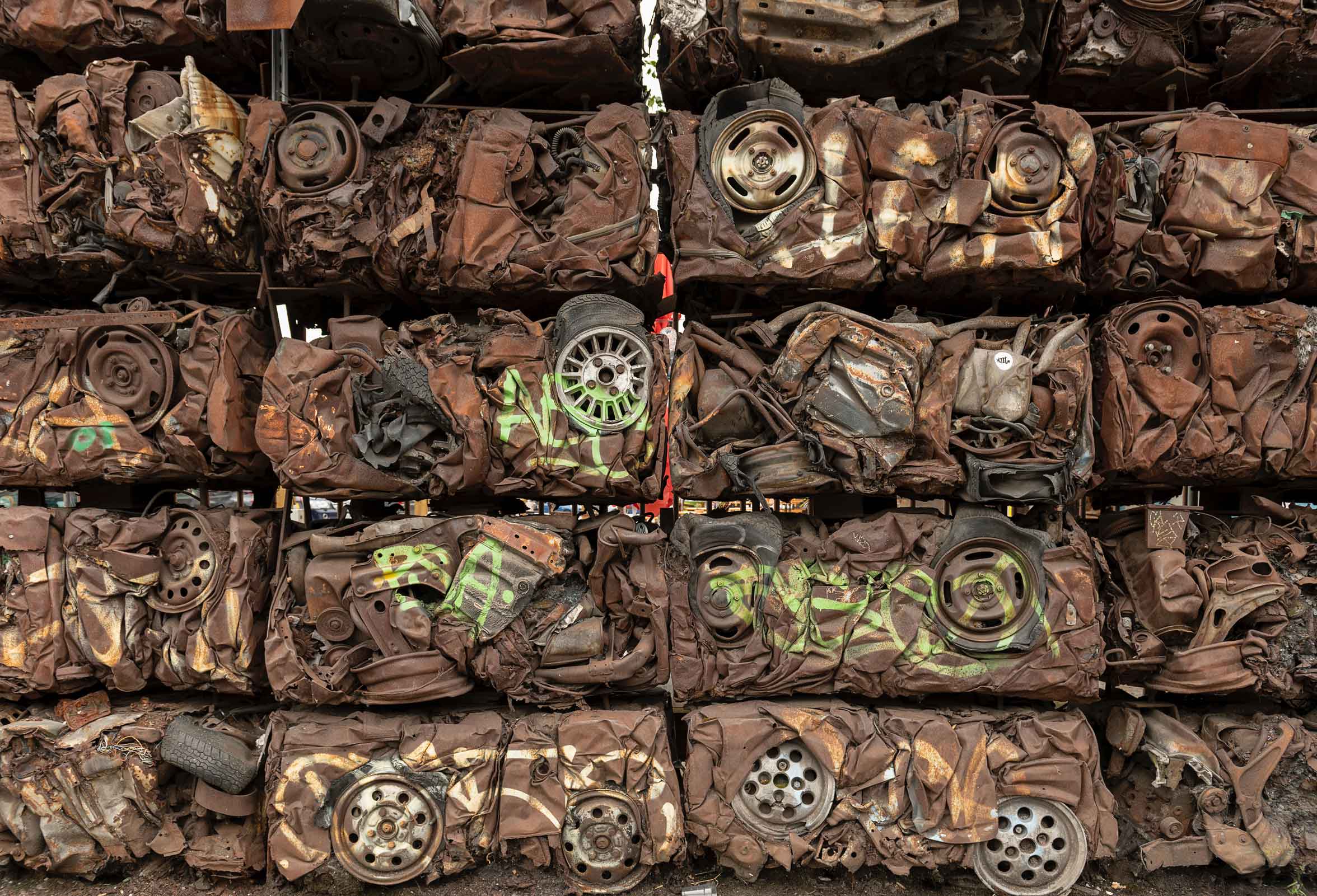
Sorting scrap metal is an important part of the metal recycling process. Accurate scrap metal grading increases recovery rates and improves the purity of recycled metals, but how is this achieved on a massive scale?
There are two main stages in the process:
- Magnetic separation of ferrous metals (e.g. iron and steel)
- Eddy current separation of non-ferrous metals (e.g. aluminium and copper)
Remaining mixed waste after these two processes has little to no remaining metal content and is taken away for further processing and disposal.
Let’s look at the two processes in more detail to understand how different types of metal are separated and sorted for recycling.
Ferrous metals
Ferrous metals such as iron and steel are magnetic, whereas aluminium, brass and copper are not. Despite popular belief, iron is not the only magnetic element: cobalt and nickel are also magnetic.
Metal alloys and compounds that contain iron, nickel or cobalt can also be magnetic, e.g. steel and stainless steel, ferrite, permalloy and alnico.
Strictly speaking, ‘ferrous’ relates only to metals that contain iron. But ‘ferromagnetic’ is used for all permanently magnetic metals, which are some of the easiest to separate out of shredded mixed scrap.
In this stage, the mixed waste passes along a conveyor belt under a strong magnet. Any ferromagnetic scrap is pulled out by the magnet, while the rest continues to stage two.
Non-ferrous metals
Once the magnetic metals are gone, the remaining waste is a mix of non-ferrous metals, along with other materials like glass, plastic and stone.
This is where eddy current separation (ECS) is crucial for scrap metal grading. During ECS, the mixed shredded waste passes through a powerful magnetic field as it continues along the conveyor belt.
Because non-ferrous metals are conductors of electricity, they are subject to an electromagnetic effect (this is given by Faraday’s Law, which describes how the magnetic field and electric current produce a force acting on the conductive materials).
This ‘electromotive’ force gives the metals a push, so they are thrown further from the end of the conveyor belt, while the remaining non-metal materials drop straight down into a different container.
Why does scrap metal grading matter?
These two relatively simple methods are used for sorting scrap metal automatically with quite high accuracy, producing purer recycled metals and reducing the amount of metal missed during waste processing.
Crucially, because both techniques work well with mixed shredded materials, there’s no need to manually sort the larger pieces of metal by hand – the whole mixed batch can be processed in the same way.
Higher purity allows recycled metal to retain more of its valuable characteristics and ensures it can be recycled again and again in the future.
What about scrap cars?
Scrap cars contain a mixture of materials, including different metals, plastic bumpers and interior panels, and upholstery.
This kind of automated scrap metal grading makes it easier to extract the valuable recyclable materials, allowing us to offer the best prices for scrap cars in Manchester and the North West.





